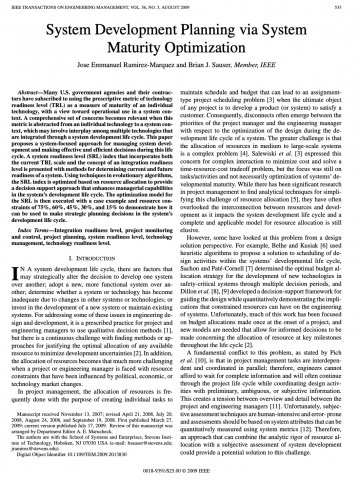The tension between detail and subjectivity is rationalized through prescriptive techniques, which allow people to make better decisions by using normative models, but with knowledge of the limitations and descriptive realities of human judgment [13]. In project and engineering management one of the prescriptive tools used is soft metrics, which are measured through subjective judgment and are relatively easy to derive, but require a complementary rationale that explains the assessment [14]. Within agencies in the U.S. Government, the prescriptive tool and soft metric of technology readiness level (TRL) has been used as an assessment of the maturity of evolving technologies prior to incorporating them into a system or subsystem. TRL’s origin is a by-product of the National Aeronautics and Space Administration’s (NASA) post-Apollo era and a revision in the National Space Policy stating that NASA’s technology program shares the mantle of responsibility for shaping the agency’s future; therefore, NASA had to make strategic decisions on which technologies to invest in for future use. In response to this growing pressure, Sadin et al. [15] developed what originally was a seven-level metric for describing the maturity of a technology. This seven-level metric later became the nine level TRL metric that it is today. In the last five to seven years, other government agencies and their contractors have adopted the TRL scale with specific variations to satisfy their needs (e.g.,
Department of Defense (DoD), Department of Energy (DoE), National Air and Space Intelligence Center). There have been many attempts to identify alternative readiness/maturity levels that will complement TRL (e.g., design readiness level, manufacturing readiness level, software readiness level, operational
readiness level, human readiness levels, habitation readiness level, capability readiness levels [16]–[18]).
Defines standard
Replaced/Superseded by document(s)
Cancelled by
Amended by
| File | MIME type | Size (KB) | Language | Download | |
|---|---|---|---|---|---|
| Ramirez IEEE TEM 2009.pdf | application/pdf | 1.07 MB | English | DOWNLOAD! |

